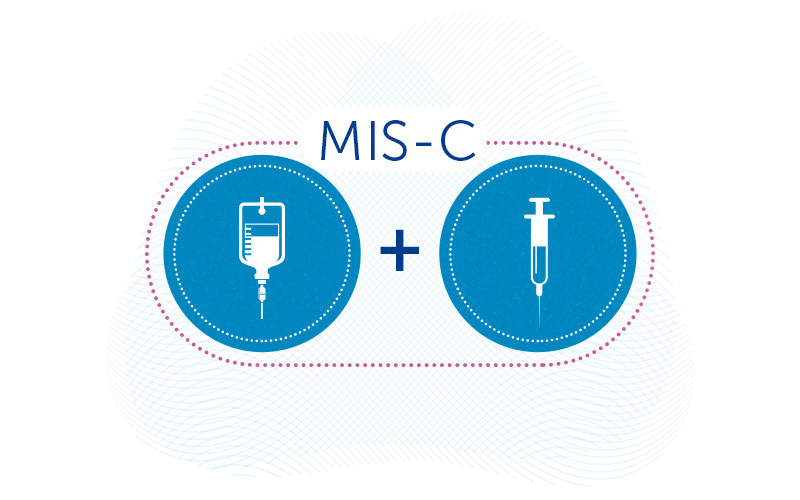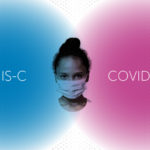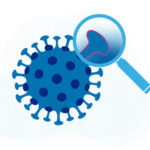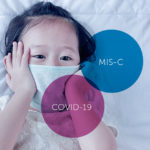Children with severe MIS-C do better with IVIG and steroids as initial therapy

When children started getting sick with multisystem inflammatory syndrome (MIS-C) in the wake of COVID-19, clinicians largely turned to two treatments. Many used immunoglobulin (IVIG) because of MIS-C’s similarities with Kawasaki disease. And many used steroids such as methylprednisolone because of MIS-C’s inflammatory features.
Key takeaway
In this large, rigorous national study, initial treatment of MIS-C with both IV immunoglobulin (IVIG) and steroids better protected children’s hearts compared with IVIG alone, and reduced the need for additional treatments.
A new report from the CDC-funded Overcoming COVID-19 study, launched by Boston Children’s Hospital in March 2020, concludes that when children treated for MIS-C are matched for initial illness severity, they do better when given both IVIG and steroids, rather than IVIG alone. The combined treatment, given early, better protected patients’ hearts and reduced their need for subsequent additional treatments as compared with IVIG alone.
The study analyzed outcomes in 518 children and adolescents with MIS-C at 58 U.S. hospitals. Findings appear in this week’s New England Journal of Medicine.
“Until now, clinicians have been relying mainly on small studies in choosing treatments for MIS-C,” says Boston Children’s rheumatologist Mary Beth Son, MD, first author on the paper. “Our study found that MIS-C patients treated with IVIG and glucocorticoids at the outset had better short-term cardiovascular outcomes as compared with IVIG alone.”
Comparing initial MIS-C treatments
The study was not randomized, but to make the comparison as clean as possible, the investigators used two statistical techniques called propensity score matching and inverse probability weighting to analyze the groups. They matched patients for initial illness severity and multiple other factors that might influence treatment decisions.
Until now, we’ve been managing patients without rigorous data to guide care.”
From the original cohort, the team matched 103 children and adolescents who initially received IVIG plus glucocorticoid and 103 who initially received IVIG alone. These patients overall were quite ill; about 68 percent were admitted to the ICU and more than 41 percent needed medication to maintain sufficient blood pressure. CDC biostatistician Nancy Murray, PhD, and CDC lead epidemiologist Manish Patel, MD, led the analyses.
“It’s really hard to conduct a randomized trial, because MIS-C is a rare, sporadic post-infectious complication of SARS-CoV-2 infection,” notes Boston Children’s critical care physician Adrienne Randolph, MD, principal investigator of Overcoming COVID-19. “Despite the limitations, our data are probably the best guide we have right now for treating patients who are experiencing or at risk for severe cardiac complications.”
The strength of the study was that it prospectively enrolled all eligible patients meeting the CDC case definition for MIS-C and rigorously collected a large set of demographic, clinical, and treatment variables, including daily outcome measures throughout hospitalization. The focus was potentially life-threatening complications, specifically shock and low cardiac function. To ensure high quality data, expert pediatric cardiologists were intensively involved, as were pediatric rheumatology, critical care, and infectious disease physicians.
Improved cardiovascular outcomes; less need for subsequent treatments
The patients’ median age was 8.7 years. Those initially given the combined treatment were significantly less likely to have cardiovascular dysfunction two or more days later than than those given IVIG alone (17 vs. 31 percent). The researchers defined dysfunction as a ventricular ejection fraction below 55 percent, or use of vasopressor drugs to boost blood pressure in patients with shock. (The study did not assess long-term cardiovascular function.)
Of the children receiving early IVIG plus steroids, 34 percent needed subsequent treatments for MIS-C. These included second doses of IVIG and biologic drugs like anakinra. In contrast, 70 percent of children given IVIG alone later received these additional treatments, or received steroids.
There was no statistically significant difference between treatments in persistent fever (31 percent with combined treatment, 40 percent with IVIG alone).
About a third of children in the cohort received biologics such as anakinra, infliximab, and tocilizumab. However, numbers were too small and the drugs’ use too varied to do a rigorous comparison with other treatments.
Reducing variability in treatment
“Our study illustrates that prompt, aggressive immunomodulatory treatment for MIS-C with IVIG and steroids is associated with a lower risk of new or persistent cardiovascular dysfunction,” says Boston Children’s cardiologist and co-investigator Jane Newburger, MD, MPH. Newburger also co-chairs the MUSIC study, on ongoing national study investigating long-term heart complications of MIS-C in children.
“Until now, we’ve been managing patients without rigorous data to guide care,” adds Son. “Our study demonstrates that for severely ill children treated for MIS-C, IVIG plus steroids rather than IVIG alone leads to better short-term cardiovascular outcomes.”
Read more about COVID-19 and MIS-C research at Boston Children’s Hospital
Related Posts :
-

MIS-C: The tip of an iceberg? Looking at cardiac care for this rare syndrome
In the early days of the COVID-19 outbreak, it seemed that children were far less likely to develop serious problems ...
-

Is it MIS-C or severe COVID-19? An update on multisystem inflammatory syndrome in children
In May 2020, multisystem inflammatory syndrome in children (MIS-C) was formally recognized as a post-infectious syndrome in children exposed to the ...
-

Sturdier spikes may explain SARS-CoV-2 variants' faster spread
The fast-spreading U.K., South Africa, and Brazil variants are raising concerns and questions about whether current COVID-19 vaccines will ...
-

Neurological involvement common in kids and teens with acute COVID-19 and MIS-C
In the largest study of its kind, researchers from Boston Children’s Hospital found neurological involvement in 22 percent of children ...





